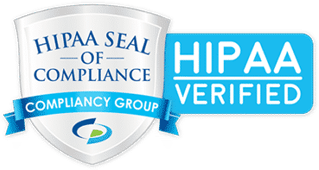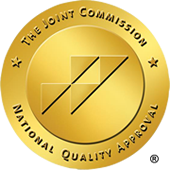Treatment for Inhalant Addiction

At Origins Recovery Center in South Padre Island, Texas, we are dedicated to helping individuals overcome inhalant addiction. Our comprehensive and compassionate care is tailored to meet the unique needs of each person, providing a supportive environment where healing and recovery can begin.
What Are Inhalants?
However, the accessibility of these substances masks the severe risks associated with inhalant abuse. Inhalants can cause immediate effects such as dizziness, slurred speech, and euphoria, but their use also poses serious health risks. Chronic inhalant abuse can lead to long-term damage to the brain, heart, liver, and kidneys and can result in permanent neurological impairment or even sudden death due to asphyxiation or cardiac arrest. Despite the short-lived high, the consequences of inhalant abuse are dangerous and life-threatening, making it essential for individuals to understand the risks involved and seek help if needed.
How Do People Take Inhalants?
- Sniffing or Snorting: Inhaling vapors directly from a container or a cloth soaked in the substance.
- Huffing: Inhaling vapors from a bag or balloon, often by breathing deeply into the container.
- Bagging: Placing a volatile substance in a plastic bag and inhaling the fumes from inside the bag increases the concentration of the vapors.
- Spraying: Spraying aerosols directly into the mouth or nose for immediate inhalation.
These methods pose significant health risks, as they can lead to a range of adverse effects. The highly concentrated nature of inhaled chemicals makes them particularly dangerous, even with just one use.

Contact Our Admissions Team Today
Common Types of Inhalants
These substances are found in products like paint thinners, nail polish remover, glue, gasoline, and felt-tip markers. They are often used to dissolve other substances, but when inhaled, they can produce an immediate high by affecting the central nervous system. Chronic use can cause damage to the liver, kidneys, and brain.
Products like spray paints, deodorants, hairsprays, and cooking sprays fall under this category. Aerosols contain propellants and chemicals that are inhaled to produce a quick high. However, using aerosols can cause damage to the lungs, heart, and nervous system.
This group includes substances such as nitrous oxide (commonly known as laughing gas), butane (found in lighter fluid), and propane. These gases can be inhaled from pressurized canisters, and while nitrous oxide is sometimes used medically in controlled settings, recreational use is highly dangerous. Gases like butane and propane can cause immediate suffocation, asphyxiation, and severe brain damage.
Often sold as room deodorizers or leather cleaners, nitrites include substances like amyl nitrite and butyl nitrite. These chemicals are often misused for their ability to enhance sexual experiences by relaxing blood vessels, but they can cause dizziness, rapid heart rate, and dangerously low blood pressure, increasing the risk of a heart attack or stroke.
Testimonials
![]()
![]()
![]()
![]()
![]()
Victoria H
I couldn’t recommend Origins more, I first attended their IOP program, then their residential program in South Padre. I’m writing this today a year and a half sober and going strong. Origins has literally saved my life in more ways than one.
![]()
![]()
![]()
![]()
![]()
Emily W
The clinicians are knowledgeable and skilled in a way that is always helpful and never harmful. This program brought me lasting healing and freedom.
![]()
![]()
![]()
![]()
![]()
Mary L
I cannot say enough about Hannah’s House. I entered broken, tired and far more sick than I realized. I was treated with kindness, love, patience and respect by all. I was so frightened to go but sad to leave, that speaks volumes. Thank you from the bottom of my heart to all who put me back together, I am eternally grateful.
![]()
![]()
![]()
![]()
![]()
Jack W
I struggled with my sobriety for over 5 years, but they were able to help me through the 12 steps of AA. I have been sober ever since my experience here. I’ll be hitting 2 years of sobriety in 22 days, thanks to this treatment center. No matter where you go, it’s all about your level of commitment towards gaining a better life ?
![]()
![]()
![]()
![]()
![]()
Jazmine R
Origins was exactly what I needed. The staff were incredibly knowledgeable, compassionate, and helpful. They come with years of experience and consider each individual they’re helping. If you’re looking for a facility that will truly care as much as you/your parents do, or are desperate for a miracle — I can’t recommend Origins more! ❤️
Signs and Symptoms of Inhalant Abuse
- Chemical Odors: The distinct smell of chemicals on the breath or clothing.
- Runny Nose or Watery Eyes: Irritation of the nasal passages and eyes.
- Nausea and Vomiting: Digestive upset following inhalant use.
- Dizziness and Loss of Coordination: Impaired motor skills and balance.
- Slurred Speech: Difficulty speaking clearly.
- Confusion and Disorientation: Altered mental state.
- Headaches: Pain in the head.
- Changes in Behavior: Increased irritability, anxiety, or depression.
- Social Withdrawal: Isolation from friends and family.
- Decreased Performance at School or Work: Decline in academic or professional performance.
- Empty Aerosol Cans or Chemical Containers: Presence of these items in unusual places.
If you suspect someone is abusing inhalants, it’s essential to seek professional help immediately.

What are the Side Effects of Inhalant Addiction?
The immediate effects of inhalant use can include:
- Euphoria: A feeling of intense pleasure or excitement.
- Hallucinations: Seeing or hearing things that are not real.
- Distorted Perceptions: Changes in the way a person perceives reality.
- Impaired Judgment: Difficulty making sound decisions.
- Loss of Consciousness: Passing out.
- Sudden Sniffing Death: Cardiac arrest due to the effects of inhalants on the heart.
Chronic inhalant abuse can lead to severe and irreversible health problems, including:
- Brain Damage: Inhalants can damage the brain, leading to cognitive deficits, memory problems, and decreased intellectual function.
- Liver and Kidney Damage: Toxic chemicals in inhalants can damage these vital organs.
- Nerve Damage: Inhalant use can damage the nervous system, causing numbness, tingling, and weakness.
- Muscle Weakness: Loss of muscle strength and coordination.
- Respiratory Problems: Damage to the lungs and airways.
- Hearing Loss: Inhalants can damage the auditory system.
- Bone Marrow Damage: In rare cases, inhalants can damage the bone marrow, affecting blood cell production.
Dangers of Inhalant Abuse
Examples of the dangers of inhalant abuse:
- Brain damage: Long-term use can cause irreversible cognitive impairments, affecting memory and problem-solving.
- Heart failure: Chemicals in inhalants can disrupt heart rhythms, leading to cardiac arrest or death.
- Respiratory issues: Inhalants can cause shortness of breath, asphyxiation, and lung damage.
- Psychological dependence: Users may become trapped in a cycle of seeking euphoria due to psychological dependence, making it difficult to quit.
- Organ damage: Chronic abuse harms vital organs, including the liver, kidneys, and nervous system.
- Social and emotional impact: Inhalant use can lead to isolation, strained relationships, and difficulties in school or work.
- Accidents and Injuries – Being under the influence of inhalants increases the risk of accidents, falls, and other injuries due to impaired judgment and coordination.
- Suffocation – Inhalant abuse can result in asphyxiation if the substance is inhaled in a closed space or in large amounts.
- Addiction – Regular inhalant use can quickly lead to dependence, making it difficult for individuals to stop without professional help.
Inhalant Addiction Treatment
Residential treatment programs provide a structured and supportive environment where individuals can focus on their recovery without the distractions and temptations of their previous environment. These programs typically offer a range of therapies, including individual counseling, group therapy, and educational workshops.
Outpatient treatment programs allow individuals to receive treatment while living at home. These programs are often a good option for individuals with less severe addictions or those who have completed a residential treatment program.
Individual and group therapy are essential components of inhalant addiction treatment. Counseling helps individuals understand the underlying causes of their addiction, develop coping skills, and learn how to prevent relapse.
Aftercare programs provide ongoing support and resources to individuals after they have completed formal treatment. These programs can help individuals maintain their sobriety and navigate the challenges of recovery.

Nationally Recognized & Accredited














